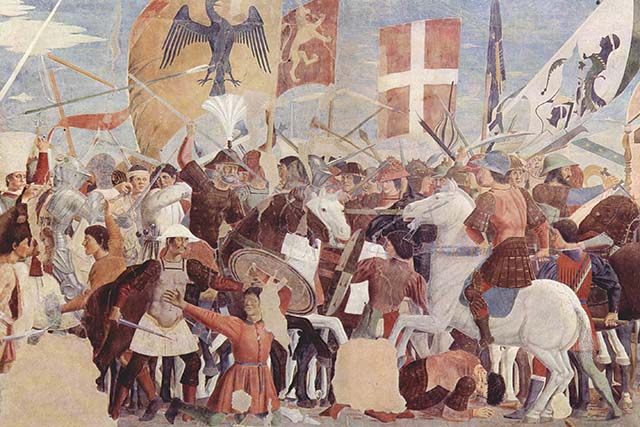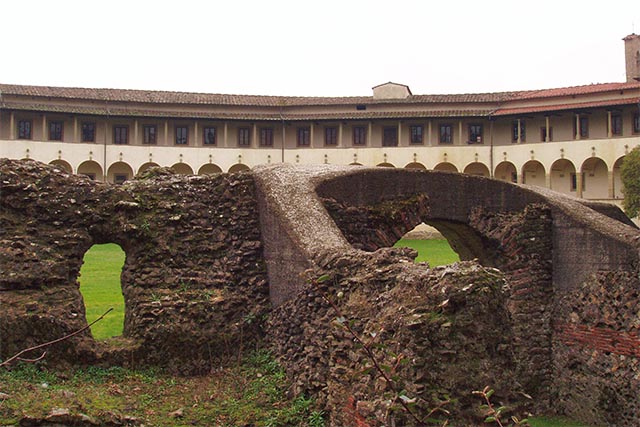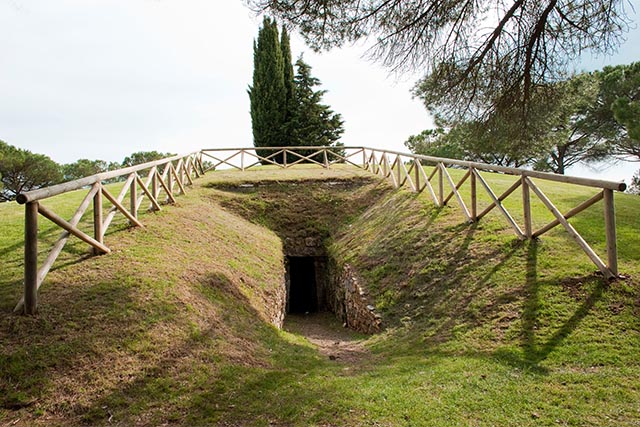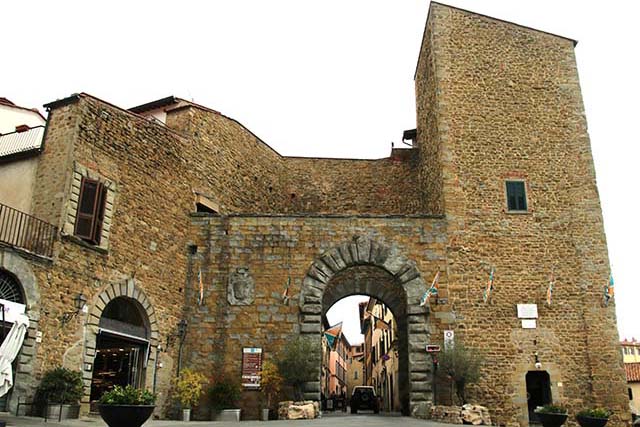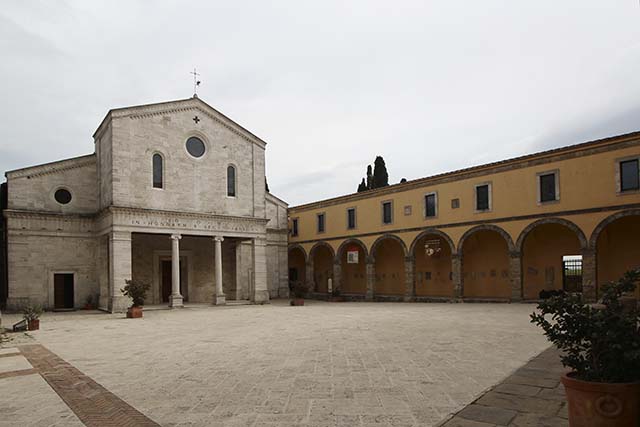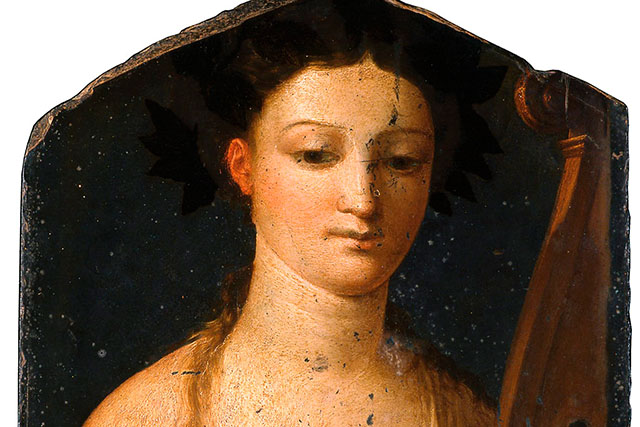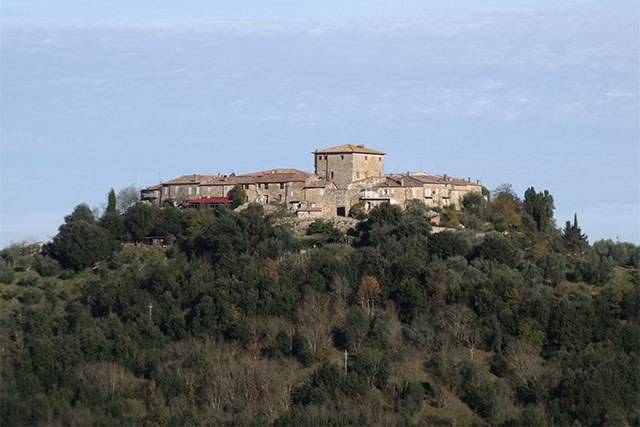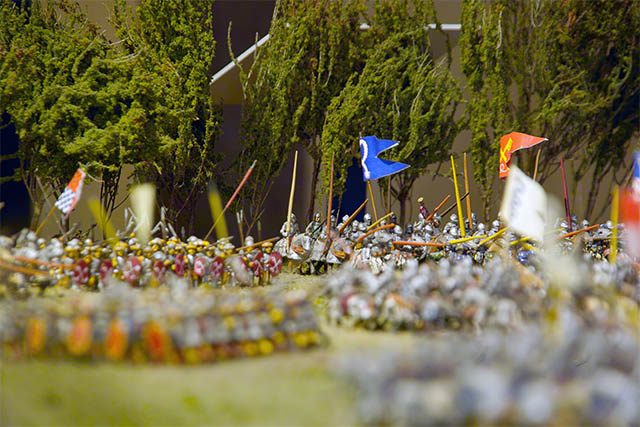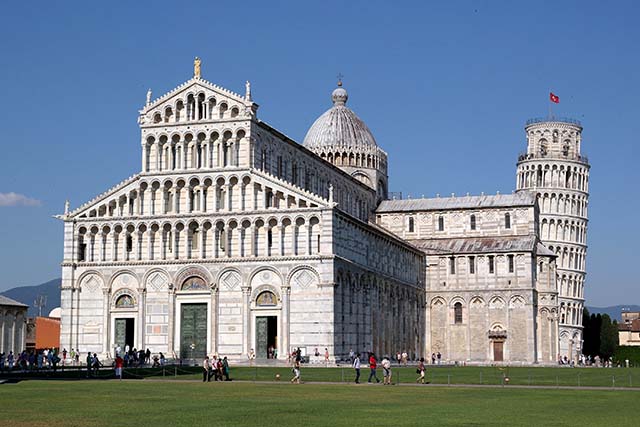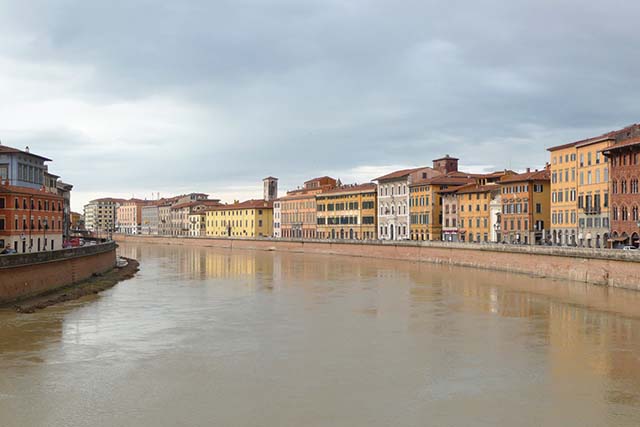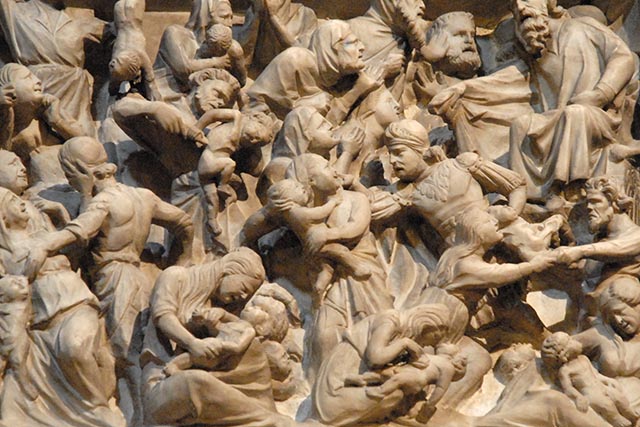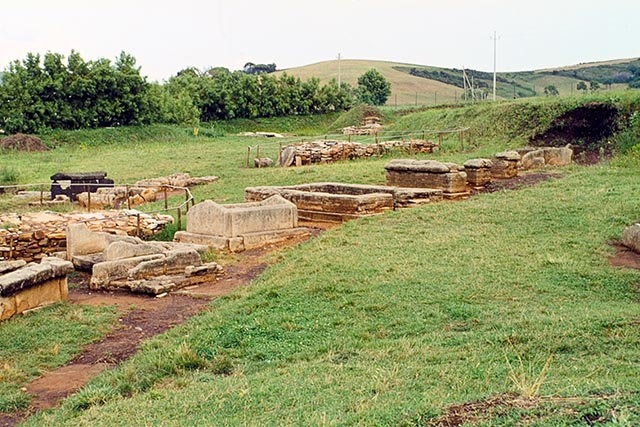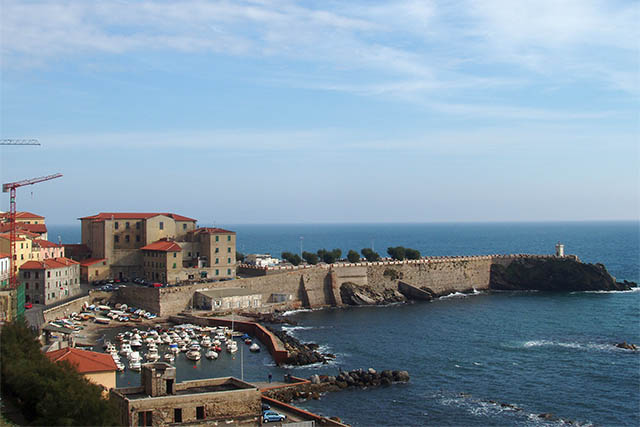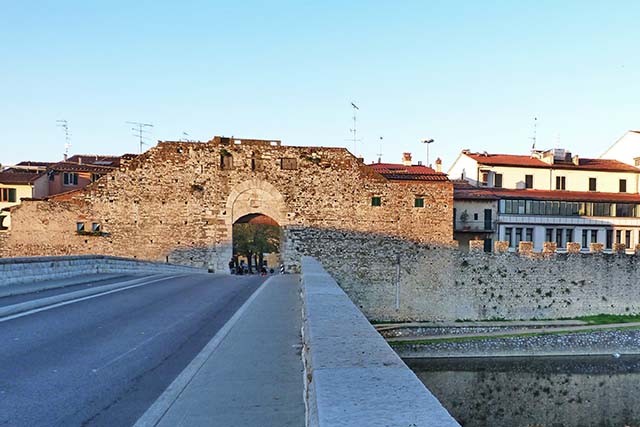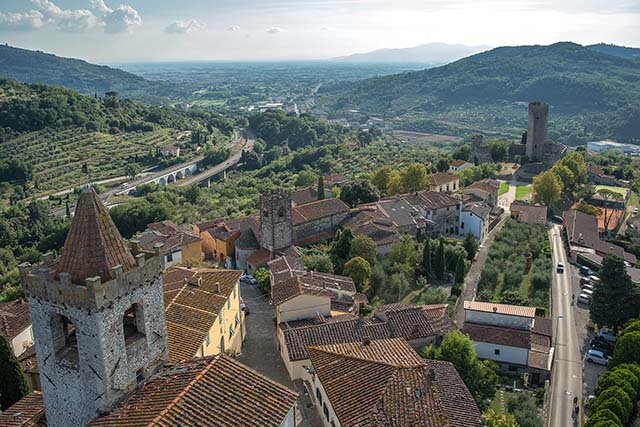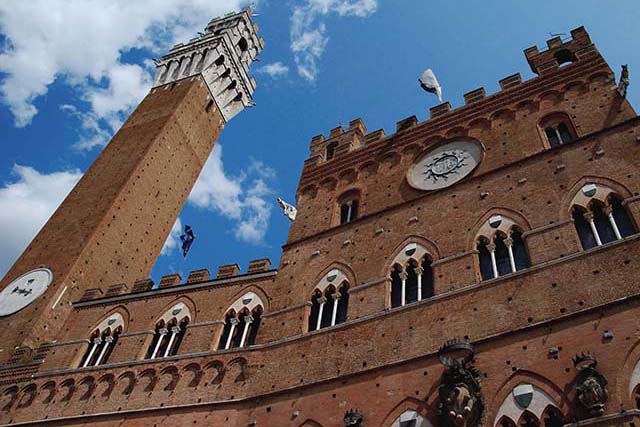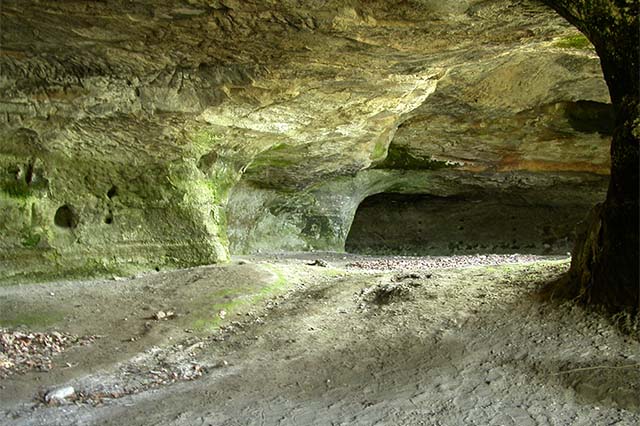Places of Tuscany
Filter/Filtra
Arezzo was one of the principal towns on Leonardo da Vinci’s itinerary when he was traveling, studying and working in Tuscany. It appears no less than twice on maps conserved in the Royal Collection at Windsor Castle and is mentioned many times in his notebooks. Due to its strategic location midway between the Tirrhenian and Adriatic coasts, the town flourished and as a consequence attracted many artists who embellished it with works of art, such as the celebrated fresco cycle The Legend of the True Cross by Piero della Francesca. In the town’s Duomo is a stained glass window dating to the 16th century in which one of the figures depicted could be Leonardo himself.
During the Renaissance Arezzo was a key junction for highways running westward toward the Adriatic Sea, but another aspect of the town attracted the interest of Leonardo as well – its long history and ancient artefacts dating to the Etruscan, Hellenistic and Roman periods, which had already exerted an influence on Donatello and Verrocchio. This legacy from the past is conserved in the Museo Archeologico Nazionale ‘Gaio Cilnio Mecenate’, named after one of the town’s most famous sons – Gaius Cilnius Maecenas, counselor, ally and friend of the emperor Augustus.
A drawing by Leonardo conserved in the Cabinet des Dessins of the Musée du Louvre depicts a structure very similar to a tomb that was discovered by chance at the beginning of the 16th century near Castellina in Chianti. Whether there is a connection between the two or not, Leonardo’s intention with this drawing does not appear to have been to make an accurate record of the construction, but rather to take note of a relic that could in the future provide inspiration or material for a work of art.
From his notes it is evident that Leonardo visited this ancient hamlet located south of Arezzo, which he referred to as “Castiglion Aretino”, more than once and from there conducted detailed surveys of the territory. For example, on a map he provides the distance in miles from the village to other localities in the area; on another folio he provides an accurate description of the hamlet’s defences; and finally in the Codex Atlanticus he records data on the lengths of waterways and the distances covered by the principal roads in the territory.
Chiusi was an urban settlement of some importance in Etruscan Italy and continued to play a role up to the Middle Ages. Leonardo marks it conspicuously in a map conserved in Great Britain (Royal Collection, Windsor Castle) and mentions it elsewhere in his notes. He also made a sketch of the tomb of Porsenna, the legendary king of Chiusi.
There are various references to Cortona in the notes of Leonardo, who studied the river that flowed past the city. The town’s Biblioteca Etrusca owns a 16th-century edition of Leonardo’s Libro di Pittura, while the Museo dell’Accademia has in its collection an interesting artifact known as the Musa Polymnia, a sketch on a piece of slate (date contested), which Leonardo may have seen and drawn inspiration from for his own encaustic technique.
At the end of the 7th century BC an imposing palazzo stood close to what is now the village of Murlo. Forgotten for centuries, it was finally rediscovered during the second half of the 20th century. Murlo also has a museum of archeology. Leonardo marked the site of this settlement on one of his maps (Royal Collection, Windsor Castle).
The Museum is situated inside the fortified town of Anghiari, below which the battle was fought on the 29 June 1440. It is the custodian of the memory of the historical event and the idea of the lost painting by Leonardo Da Vinci. A system of digitalised images and projections bring Leonardo's work to life again, and the museum also offers a slice of the history of the area through a selection of archeological finds, manuscripts, prints and antique firearms made in Anghiari.
The city of Piombino has had a long and eventful history. Rising from the ashes of the ancient Etruscan civilization, the town survived through the Middle Ages and the Renaissance, until it established itself as a principality, and it is in this form that it joined the Grand Duchy of Tuscany in 1815. It is known that Leonardo da Vinci spent time in Piombino on two separate occasions. The first was in 1502, at the behest of Cesare Borgia, who briefly ruled the territory and sent him there to study projects for the development of the area. His second sojourn, in 1504, was dedicated the reinforcement of the town’s strategic defenses at the request of the city-state of Florence.
Pisa was one of the most important artistic and cultural centres of Tuscany at the time of Leonardo and had a special significance for him. His father and his brother both worked for many years in the city, while his nephew, the sculptor Pierino da Vinci, settled in Pisa and enjoyed a successful career working on prestigious commissions until he died there in 1553.
In Madrid Ms. II, on folios 52v-53r, which constitute Leonardo's closest study of the surroundings of Pisa Leonardo provides important information on the hydrographic nature of the territory before the grand-ducal interventions. Leonardo took an interest in the Pisan territory especially during the years 1503-1504, for his project for deviating the Arno toward the Stagno di Livorno, the realisation of which was begun on August 22, 1504, only to conclude in failure the following autumn.
The town of Pistoia, where an uncle of his also lived, was fundamental to the artistic formation of Leonardo. His first maestro, the painter and sculptor Andrea del Verrocchio, produced many sculptures and paintings for the town’s Duomo and probably also for the Church of San Domenico, and it is possible that Leonardo collaborated on some of these commissions. The artist’s birthplace, Vinci, formed part of the diocese of Pistoia, and on his visits to Pistoia the young Leonardo would have had the opportunity to study the works of the celebrated sculptors Nicola and Giovanni Pisano, as well as fresco cycles by important painters. The town is cited numerous times in the artist’s papers, in particular those pertaining to his project for the diversion of the Arno River.
The Etruscans’ one large port town – Populonia – overlooks the Gulf of Baratti. Leonardo marks the site of this town twice in manuscripts dating to the beginning of the 16th century. Testifying to the glory of the Etruscan civilization is the splendid architecture of its tumuli, as well as funerary furnishings and finely crafted artefacts of every type, a large collection of which are on display in the Museo Archeologico del Territorio di Populonia in Piombino.
Leonardo also had occasion to study the modest port of Piombino during his second sojourn. He clearly viewed it as a weak point in the coastal defenses of the territory, and suggested that a fortified bastion be built overlooking the port, a sketch of which may be found in one of his notebooks.
Prato was a city that long attracted Leonardo’s interest and for more than one reason. To begin with, it constituted the fulcrum of his project to divert the Arno River. His plan involved the construction of a navigable canal that would pass through the town itself. Furthermore, Leonardo had many friends in Prato, among them Filippino Lippi. Finally, the town was adorned with significant works by two important artists whom Leonardo admired – Donatello and Sangallo.
In the ambitious project of «putting the Arno in a canal" from Florence to the Fucecchio Marsh through Prato, Pistoia and the Val di Nievole, Leonardo studies the feasibility of passing through the Serravalle hill in a tunnel. For this purpose, he conceived a leveling tool (Madrid Code I, f. 111 r, c. 1495) to ensure that «starting the aforementioned quarry on each side of the mountain, it would collide together on the same line».
There were close ties between Leonardo and the city of Siena and each left its mark on the other. The young artist frequented the cultural circles of the city and in this way was exposed to the work of the great Sienese engineers Mariano Taccola and Francesco di Giorgio, and to the classics of antiquity, both of which would prove to be of fundamental importance to his activities as a scientist, engineer and artist.
Leonardo mentions Siena many times in his notes and in turn Siena and artists such as Il Sodoma (Giovanni Antonio Bazzi) and Domenico Beccafumi would later draw inspiration from his work.
Lying between Sovana, Sorano and San Quirico is the fascinating Parco Archeologico Città del Tufo, which features a village carved into the hillside of tuff, a porous volcanic rock. Near Sovana is one of the finest Etruscan necropoli in Italy, with a large number of monumental tombs. In several of his maps conserved in the Royal Collection at Windsor Castle, Leonardo clearly marks the position of Sovana, which was an important town at the time of the early Etruscans and continued to play an important role well into the Roman age.




